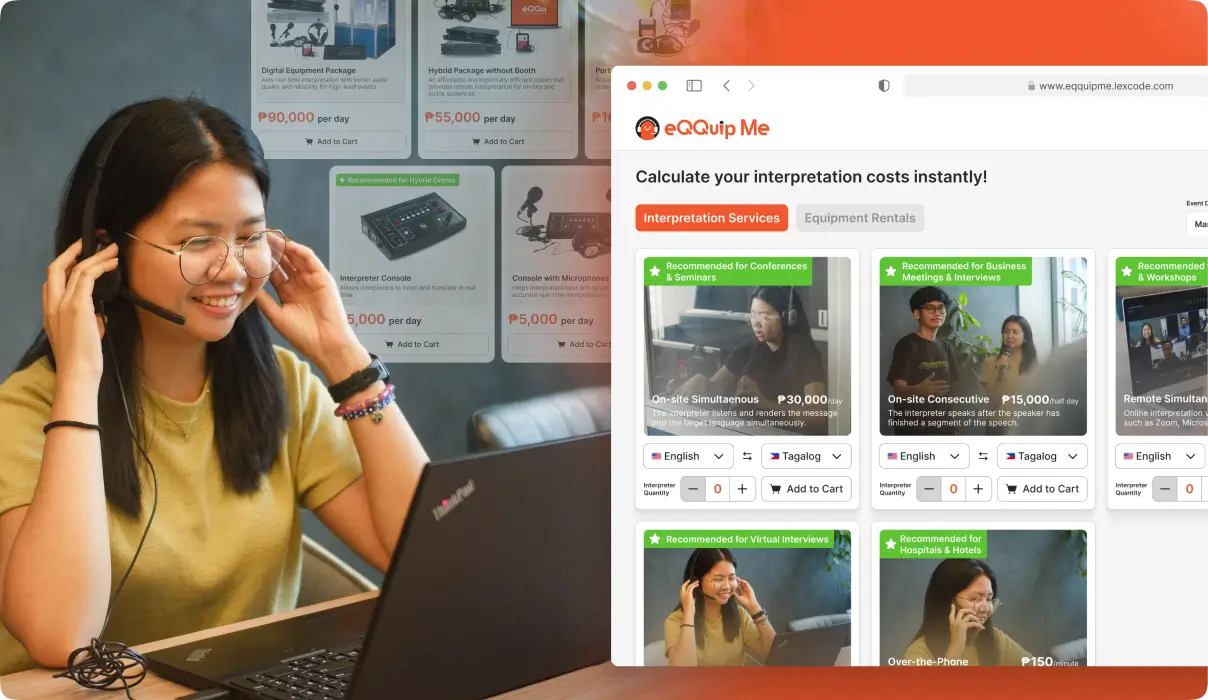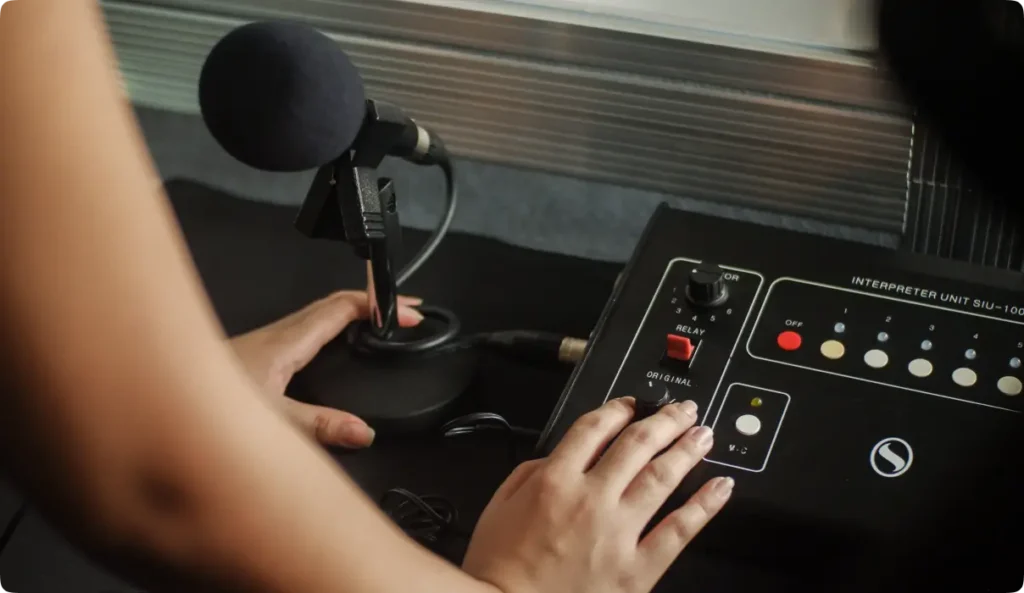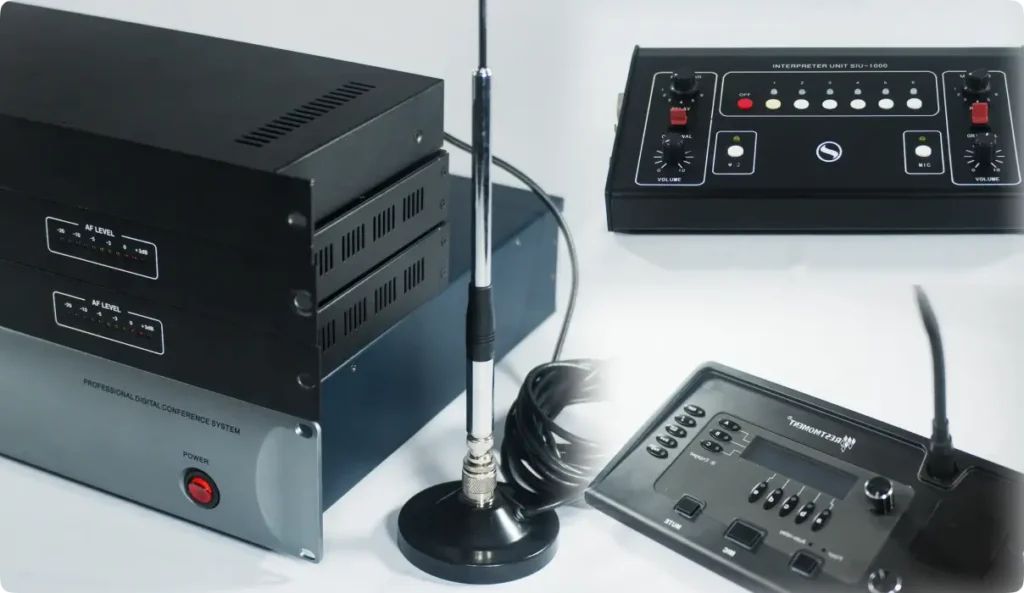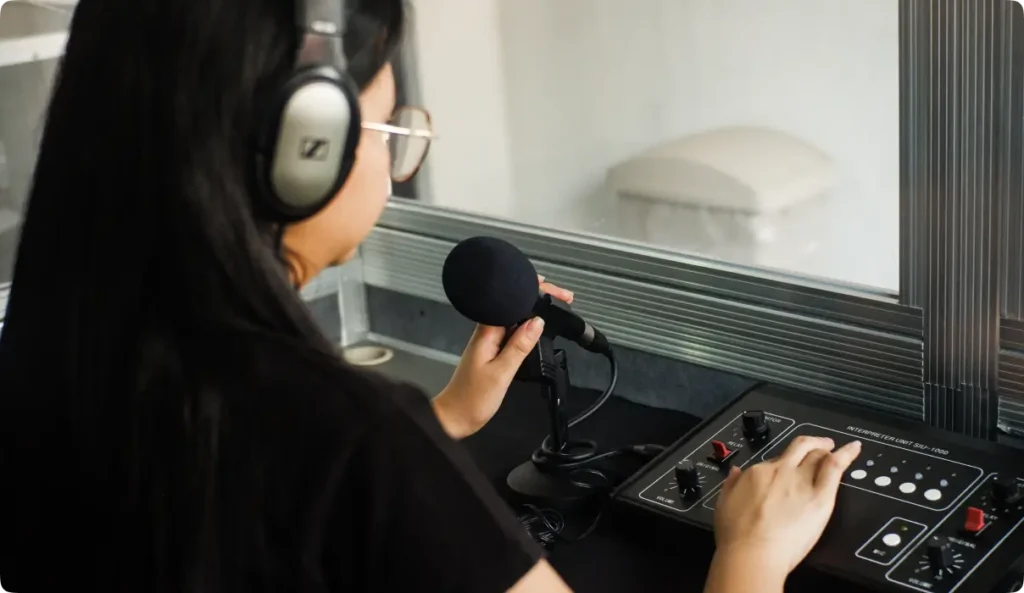Sarah L., Junior UI/UX Designer


“Making It” is Different From What I Expected
eQQuip Me is a digital tool designed to create a better end-to-end user experience for booking interpretation services and renting equipment. The desired vision of the client journey is to add a service or equipment to the cart, fill out the form, and submit a quote request. Sounds simple and easy, right? Apparently, that is just the tip of the iceberg. Driven by the rise of automation and technology, booking services and equipment have become digital. However, automation alone isn’t enough without a good user experience.
No one likes reading long email threads, slow quote turnarounds, and unclear requirements. No one likes calling back and forth with the coordinator either. While factors like pricing or availability are critical to some clients, others may be more concerned with the ease of payments, scheduling, or support. Therefore, we built eQQuip Me just like an e-commerce platform or a self-service kiosk in fast food restaurants.

Interpreter Booking, But Make It User-Friendly
The original idea of the booking process was:
This linear or step-by-step process sounded ideal and straightforward, but we figured it wasn’t intuitive because some clients might only look for an interpretation service or equipment package, or vice versa. Instead, I designed the system just like an e-commerce platform to let our clients freely choose the service or equipment that fits their specific needs.
As a designer, one of the features that I like is the AI-powered live chat support called Qubi. The rationale behind this design is to assist users by answering questions or providing quick responses to common inquiries. Furthermore, as mobile phones evolved into touch-screen smartphones, creating a mobile-friendly experience is no longer optional—it’s essential. Besides these key features, a good UX Design prioritizes tap efficiency, fast loading times, and form autosave features.

Trust Starts with What Users See
When I saw the pixelated photos we had of our equipment before, I knew we had to do better. I immediately organized a photoshoot with the team, and thanks to my fellow designer, who also happens to be a talented photographer, we produced a set of high-quality and professional images we’re proud to showcase. Displaying a combination of professional images and authentic event photos helps users visualize the experience they’re booking.
One of the key features of eQQuip Me is the dynamic quote summary that updates in real time, helping users see how each choice affects the total cost. That way, it builds credibility and transparency, reduces hesitation, and boosts booking rates.
You and Your User Don’t Speak the Same Language
One of the challenges I encountered was understanding the unfamiliar industry terms and the purposes of all interpretation services and equipment rentals. What is the difference between on-site simultaneous and on-site consecutive interpretations? What type of events do our clients usually host? Just what is the purpose of a transmitter? But the most important question is, how can I help our users find what they need quickly? This is one of the cases where you and your user might have a language barrier.
The solution? Use plain language. Furthermore, we categorized the services and equipment and added simplified descriptions and label tags like “Recommended for Hybrid Events.” That way, it reduces confusion and shortens decision-making time. Realistically, users don’t have the time to read all the jargon, and they might not understand how the service or equipment fits their specific needs. As a designer, you and your user don’t speak the same language.

Becoming Business Aware
“If you just go into the room and narrowly think about ‘’design, design, design,’ ’ and if you don’t value the business or understand why you have to move to market quickly, your contribution will not be felt.”
— Kate Aronowitz, Design Partner at GV
Reflecting on my experience building this product, I realized I lacked the language to get my stakeholders on board with my ideas and design decisions. As a designer, I needed to learn business because I could not expect my stakeholders to listen to my “out-of-touch” design decisions just because I was relatively new in the localization and translation industry. I was speaking design, but they were speaking business, and sometimes, jargon.
UX Designers need to learn the language of business to understand how our designs play out in real-life scenarios. By learning the language of business, I was empowered to create design solutions that impact both customer value and user experience.

The Future of Interpretation Starts Here
Our CEO once told me the best user experience doesn’t end after the design phase—and certainly not after the product launch. As a designer, my job isn’t done yet, and as a matter of fact, this is just the beginning. While interpreters turn complex language into clear, accurate communication, UX designers translate complex ideas into intuitive interfaces and creative design solutions. We work in entirely distinct industries, but both aim for client satisfaction and thoughtful solutions.





May 15, 2025
I Couldn’t Code, So I Designed My Way In: How I Found My Place in Tech Through Creativity
Veronica R.
Explore This Article
May 15, 2025
Why Desktop Publishing Matters: Ensuring Your Translated Documents Look Perfect Every Time
LC D.
Explore This Article
May 15, 2025
Choosing the Right Interpretation Service: How eQQui Ensures a Smooth Multilingual Event Experience
Beatrix A.
Explore This Article